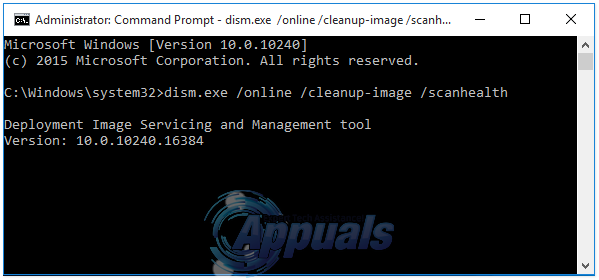FIX: System.Runtime.InteropServices.COMException (0x80070422)
Many Windows users operating computers with Windows 10 have reported encountering the System.Runtime.InteropServices.COMExceptions (0x80070422) error and other errors every single time they boot up their computer. Some of the numerous error messages that these users report seeing in conjunction with the System.Runtime.InteropServices.COMExceptions (0x80070422) error include the following:
at System.Management.ThreadDispatch.Start()
at System.Management.ManagementScope.Initialize()
at System.Management.ManagementEventWatcher.Initialize()
at System.Management.ManagementEventWatcher.Start()
at SecureDeleteBackground.MainWindow_SourceInitialized(Objectsender, EventArgs e)
The g-pAsWMI is not open. Please get mode.
In these cases, users were unable to perform operations such as connecting to Wi-Fi networks or playing audio after dismissing numerous error messages. This could be a significant problem for anyone who has used a computer. The issue is likely caused by missing, corrupted, or damaged system files. But, don’t worry, the problem is quite fixable. Below are some of the most effective solutions:
Solution 1: Run a couple of DISM commands
Right-click on the Start Menu button to open the WinX Menu.
Click on Command Prompt (Admin) in the WinX Menu.

Type in the following command and then press Enter:
dism.exe /online /cleanup-image /scanhealth
Once the previous command has been executed, type in the following command and press Enter:
dism.exe /online /cleanup-image /restorehealth

Solution 2: Run an SFC scan
A System File Checker (SFC) scan is a utility that scans the computer for any corrupted or damaged system files and repairs whatever damaged system files it discovers. Running an SFC scan is another effective method that you can use to try and fix this problem. To run an SFC scan on a Windows 10 computer, go here and follow the instructions provided.
Solution 3: Repair your computer using installation or recovery media,
If the two solutions listed and described above don’t work for you, you should try repairing your computer using Windows 10 installation or recovery media. The Windows 10 repair functionality is designed to repair any and all system-related problems in Windows 10.
Acquire a Windows 10 installation USB, DVD, or a Windows 10 recovery media. If you don’t have any of these media on hand, you may need to create one (refer to the steps here). Once you have the Windows 10 installation or recovery media, insert it into your computer.
Restart your computer.
Access your computer’s BIOS settings (check your computer’s instructions manual for directions to do so).
Configure your computer to boot from the media that you have inserted.
Go through with the Windows 10 installation process as you usually would, and then on the Install Windows page, click on Repair your computer instead of Install now. If you are using Windows 10 recovery media and not Windows 10 installation media, skip this step.
Follow the onscreen instructions to repair your computer.